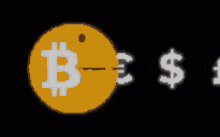Posted on February 13, 2025
Cypherpunks Mailing List: Origins, Impact

The Cypherpunks mailing list emerged in the early 1990s as a pivotal space for discussions on cryptography, privacy, and digital rights, significantly influencing the development of technologies like Bitcoin and enhancing concepts of digital privacy. Here’s a detailed description based on available information:
Origins and Founders
-
Founded in 1992: The list was initiated by Eric Hughes, Timothy C. May, and John Gilmore, all prominent figures in technology and cryptography. They aimed to discuss how cryptography could empower individuals by protecting privacy online.
-
Name Origin: The term “cypherpunks” was coined by Jude Milhon, combining “cipher” (a cryptographic method) with “cyberpunk” (a genre known for its dystopian, tech-focused narratives), reflecting the group’s focus on using technology to challenge traditional power structures.
Purpose and Activity
-
Discussion Topics: The list covered a wide array of subjects, including mathematics, computer science, cryptography, political and philosophical debates, personal disputes, and occasionally spam. Key areas included:
-
Privacy and Anonymity: Debates on how to achieve privacy in digital communications.
-
Cryptography: Technical discussions on cryptographic algorithms, encryption methods, and their practical applications.
-
Social and Political Change: How technology could be used to promote individual freedoms and resist surveillance.
-
-
Cultural Impact: The list became a breeding ground for ideas that later influenced the creation of privacy-enhancing technologies and decentralized systems. Notable outcomes include:
-
Inspiration for Bitcoin: Concepts discussed like digital cash and pseudonymous transactions were foundational to Bitcoin’s development.
-
Cypherpunk’s Manifesto: Authored by Eric Hughes, this manifesto outlined the ethos of using cryptography for social change.
-
Structure and Evolution
-
Initial Setup: Hosted on toad.com, the list initially managed around 700 subscribers by 1994, growing to an estimated 2000 by 1997.
-
Distributed Architecture: From 1997, to enhance resilience against censorship or attacks, the list moved to a distributed architecture using Majordomo software with multiple nodes. This period saw a peak of seven nodes, reducing to one by mid-2005 hosted by al-qaeda.net.
-
Software Changes: By 2013, following an outage, the list software was updated from Majordomo to GNU Mailman, and the node was renamed to cpunks.org, marking the end of the distributed setup.
Notable Participants and Contributions
-
Influential Members: Included Julian Assange (WikiLeaks), Hal Finney (first Bitcoin transaction recipient), and possibly Satoshi Nakamoto.
-
Major Contributions:
-
Hal Finney notably discussed the use of computers for liberation rather than control.
-
Adam Back, with his Hashcash, which influenced Bitcoin’s proof-of-work system.
-
Phil Zimmermann with PGP (Pretty Good Privacy), significantly impacting personal encryption.
-
Current Status
-
Archives: While there are comprehensive archives for the 90s, the period from 2000 to 2013 lacks detailed public records. However, the list remains active, albeit with reduced activity compared to its heyday.
-
Mailman Era: Since 2013, the list has continued under GNU Mailman at lists.cpunks.org, where new discussions might occur, though not as vibrantly as in its formative years.
Legacy
-
The Cypherpunks mailing list not only influenced tech development but also shaped cultural attitudes towards privacy, security, and individual autonomy in the digital age. Its discussions helped foster a community that believed in using technology for social good, inspiring ongoing movements in privacy and cybersecurity.
In summary, the Cypherpunks mailing list was a seminal space for ideation and activism in digital privacy and cryptography, with its legacy and influence still felt in contemporary technology and privacy discussions.





 Bitcoin
Bitcoin  Ethereum
Ethereum  Tether
Tether  XRP
XRP  Wrapped SOL
Wrapped SOL  Dogecoin
Dogecoin  Bitcoin Cash
Bitcoin Cash  Monero
Monero  Zcash
Zcash  Litecoin
Litecoin  PAX Gold
PAX Gold